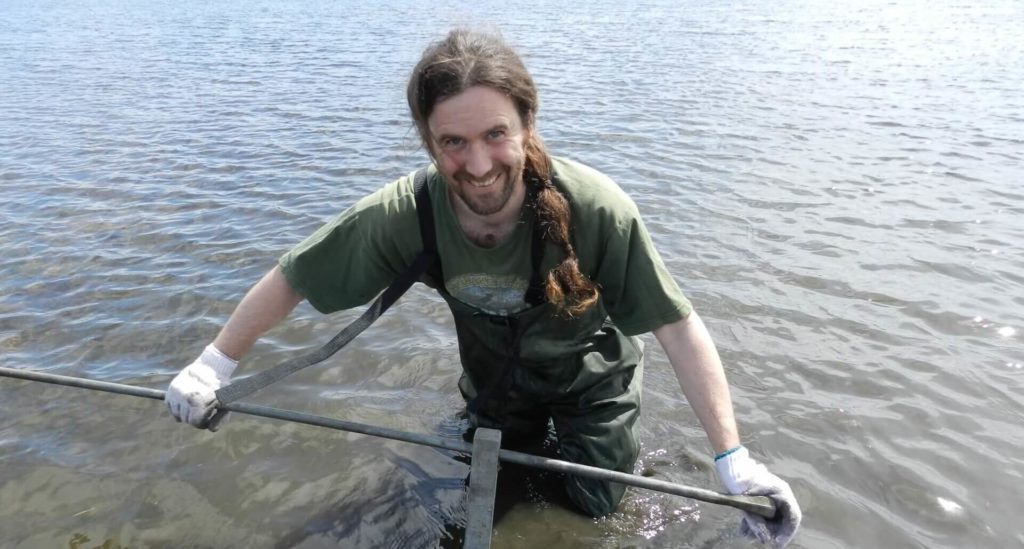
After misreported swimming conditions at Parlee Beach last summer erupted into wave after wave of reports pointing to water contamination throughout Shediac Bay, Environment Minister Serge Rousselle announced the formation of a new Steering Committee that will work with scientists and local stakeholders to find and fix water contamination throughout the watershed by beach season 2017.
What needs to happen to assure tourist and locals alike that Parlee Beach is swimmable by next summer?
Here are three recommendations by the Manager of the Shediac Bay Watershed Association (SBWA) Rémi Donelle for steering Shediac Bay water quality back towards cleaner water:
- Spread awareness on multiple sources of contamination
Donelle says there are multiple sources of pollution that need to be addressed and resolving just one very likely won’t be enough.
“It’s not a simple problem. There isn’t just one source of contamination for Parlee Beach. A little bit comes from everywhere, so I guess it’s everyone’s responsibility to address what they can,” Donelle told the Conservation Council on Feb 15, 2017. “The Steering Committee will need to work with a lot of different partners if they want to be effective. This means the Greater Shediac Sewerage Commission, the Town of Shediac, residents, boat owners and farmers alike.”
In fact, we’re seeing the beginning of this collaboration between local stakeholders.
For instance, Minister of Fisheries, Oceans and the Canadian Coast Guard Dominic LeBlanc was in Shediac on Feb 20th to speak with town officials about a $1.9 million project to upgrade the town’s sewerage lines on Main Street should that be the source of the contamination. If necessary, Minister LeBlanc says he’ll look to the Federal government for funding.
As for other sources of contamination, the SBWA is planning to spread awareness regarding the free-use of pumping stations at the bay’s two marinas as well as working with resident farmers to help prevent additional sources of contamination. However, if things continue to worsen rather than improve, the government may also need to consider stricter regulations, according to Donelle.
- Identify and target specific sources of contamination
Donelle says specific sources of contamination must be identified with the help of government and partners.
The Steering Committee will be working with Mount Allison University Professor Dr. Douglas Campbell, who had previously said he planned to study Shediac Bay pollution with the help his environmental microbiology class last November.
Dr. Campbell will be working with the government to gather Shediac Bay’s bacteria results from interested parties like the SBWA and update the province’s new information portal on Parlee Beach water quality. Donelle says he is hoping this newly updated database will help point them in the right direction.
- Review the current water quality testing system and inform the public on the source of each instance of contamination
While the government has promised to review the current water testing system and promised to keep the public better informed about water quality by enhancing on-site signage and posting water quality results online, Donelle says they need to provide better information on why the water quality is poor: “Right now, that information is not available to people why the water quality is poor – is it high bacterial count? Is it rainfall?”
Donelle says there is a big difference between an E.coli count of 100 and 1000, be
tween contamination spikes that come with rainfall and those that come from abnormal amounts of animal fecal matter. He says that everyone has different boundaries and that’s why he recommends the government be transparent about the source of contamination when they post water quality results.
When is it safe to swim?
Escherichia coli (abbreviated as E. coli) is bacteria found in the environment, foods, and intestines of people and animals. Although most strains of E. coli are harmless, others can make you sick and can cause kidney failure, urinary tract infections, respiratory illness and pneumonia. When we discover E. coli in water, it usually has come from sewage runoffs, and animal faecal matter. That’s why health officials all over the world carefully monitor E. Coli and its different strains.
Health Canada has set safe limits for E. Coli in drinking water and E. coli in recreational waters. The number of faecal bacteria considered unsafe for recreational swimming varies depending on whether the bacteria is found in freshwater or saltwater. If tests find more than an average of 35 for every 100 millilitres (just a wee bit less than 1/2 cup), it is declared unsafe for all and the beach is closed.
Things you might know about Parlee Beach
- Parlee Beach boasts the warmest salt waters in Canada and the warmest water north of Virginia.
- In 1959, Parlee Beach was named in honour of T. Babbitt Parlee, two years after he died in a plane crash. Parlee was the former Minister of Municipal Affairs in Hugh John Flemming’s government. Babbitt Parlee was also a former mayor of Moncton (1950-52).
- In 1989, the Beach Boys held a concert at Parlee Beach for 20,000 fans at a temporary concert stage between Main Street and the beach.
- Each spring, the provincial government spends about $60,000 replacing sand on the beach lost from erosion. Up to a thousand truckloads of sand are needed to replace the amount of sand lost.
- Nearly a half million people visit Parlee Beach Provincial Park each year.
